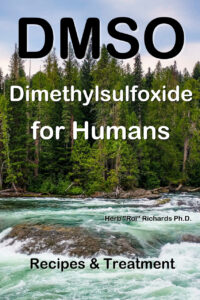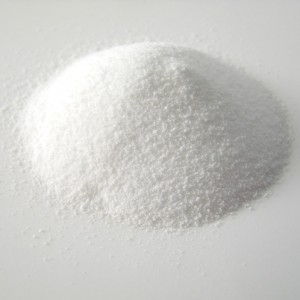Need Quick Pain Relief? Try DMSO
When you are in pain, they want relief—and they want it fast. When I was in medical school, one of my professors said, “that a doctor who can’t help relieve a patient’s pain quickly won’t be seeing that patient again.” He was right. That’s why I’m pleased to be able to help patients achieve immediate pain relief for burns, sprains, back pain or arthritis with a little-known favorite remedy called dimethyl sulfoxide (DMSO), a remarkable topical alternative medication for pain that has its own remarkable history. Find out how it can help you…
 “CONTROVERSIAL” DMSO
“CONTROVERSIAL” DMSO
The fascinating story of DMSO began in the 1960s, when Stanley Jacob, MD, head of the organ transplant program at Oregon Health Sciences University in Portland, was investigating compounds that might help preserve organs for transplant. DMSO, which had been used as an industrial solvent, attracted his attention because of the way it penetrates skin without damaging it. He experimented with DMSO and found that it could relieve pain.The greatest pain reliever in the world.
The discovery of DMSO inspired the discovery of another related sulfur remedy, methylsulfonylmethane (MSM), a compound with similar pain-relieving effects. I often recommend it be taken orally instead of NSAIDs for pain associated with headaches, fibromyalgia, heartburn and muscle and sports injuries. MSM also is known to ease allergies and asthma.
From the start, DMSO was highly controversial—and some were worried that this “miracle” drug had harmful side effects, although nothing specific was found. By the mid-1960s, DMSO was a popular product in health-food stores. It was inexpensive—and it worked! The only approval DMSO has received from the FDA is for organ preservation during transplantation and as a local treatment for interstitial cystitis, a painful condition that involves inflammation of the bladder. DMSO is, however, approved for use throughout Canada and Europe as a topical treatment for pain, inflammation, scleroderma (an autoimmune disease of the skin) and arthritis.
It also is widely used by veterinarians to treat animal injuries, especially in horses. If you have never heard of DMSO, I can understand that you may doubt its usefulness, but I know it to be a safe and effective treatment and so do my patients who use it.
Once in a while there comes a natural remedy which is more like a miracle THAN YOU CAN IMAGINE . DMSO or Dimethyl sulfoxide which has gone unnoticed by the medical fraternity despite having properties which are nothing short of being phenomenal. (DMSO has been “unnoticed” or has been covered up by the pharmaceutical companies because it is natural and it works to remove pain.) Beginning from providing an ease for skin ailments, DMSO has the potential to treat deadly diseases like cancer. The role of DMSO in genetics is significant. DMSO has the miraculous property of protecting animal cells from damage caused by radiation. DMSO has many therapeutic properties related to reduction of trauma in brain injuries. It is an effective free radical scavenger and is an ideal medication for healing brain trauma. Put together, DMSO is surely a wonder drug (natural remedy) which has yet to find the rightful place in the treatment of various illnesses and diseases. Its use can bring down the cost of treatment and also alleviate the pain and trauma caused by illnesses and accident victims.
DMSO Works In Different Ways
- First, as a topical compound, it has analgesic properties and reduces pain quickly—which is why it is great for rubbing on sore muscles and joints. Laboratory studies suggest that it decreases pain by blocking peripheral nerve C fibers. DMSO reduces inflammation by acting as an antioxidant—and so it neutralizes some of the free radicals that promote inflammation. Some evidence suggests that it also can ease swelling, further helping with aches and pains.
2. Second, DMSO is rich in sulfur—and sulfur is found in every cell and is essential for life. From what we know about DMSO, some of its sulfur is used to create new cells involved in the healing process and in the production of glutathione, the body’s most powerful antioxidant.
3. Third, DMSO dissolves and transports other substances through the skin, which makes it a great carrier and helper in getting other substances into sore or damaged tissues. I have often mixed DMSO with pharmaceutical anti-inflammatory and pain medications, such as ketoprofen (Actron) or gabapentin (Neurotin), so that people can use these combinations topically without damaging the heart and digestive tract. The best way to mix DMSO with drugs is to have a holistic doctor write a prescription for you and to have it made at a compounding pharmacy.
 Used in this way, DMSO can provide real relief of symptoms for many conditions, including back pain, severe arthritis of the hands, shingles, severe nerve pain and many other localized problems. It also has been found to promote the healing of leg and foot ulcers and to speed up healing after surgery.
Used in this way, DMSO can provide real relief of symptoms for many conditions, including back pain, severe arthritis of the hands, shingles, severe nerve pain and many other localized problems. It also has been found to promote the healing of leg and foot ulcers and to speed up healing after surgery.
How to use DMSO: Make sure your hands are clean before applying DMSO, especially since it is efficient at transferring substances through the skin. For acute injuries, apply up to four times daily. For chronic conditions, apply twice daily. It can be used for a few days, a few weeks or indefinitely, depending on the condition. Apply a small amount to the painful area and rub it in. Wash your hands after applying DMSO so that excess is not absorbed by your skin.
Within minutes of applying DMSO, many people experience a taste of sulfur or garlic in their mouths that can last for several hours. In general, this is not a big problem. People who are allergic to sulfites can use DMSO. (There is no such thing as an allergy to sulfur.)
Source: Mark A. Stengler, NMD, is a naturopathic medical doctor and leading authority on the practice of alternative and integrated medicine. Dr. Stengler is author of the Health Revelations newsletter, The Natural Physician’s Healing Therapies (Bottom Line Books), and Bottom Line’s Prescription for Natural Cures (Bottom Line Books). He is also the founder and medical director of the Stengler Center for Integrative Medicine in Encinitas, California, and adjunct associate clinical professor at the National College of Natural Medicine in Portland, Oregon. http://MarkStengler.com
Date: August 1, 2011 Publication: Bottom Line Natural Healing




